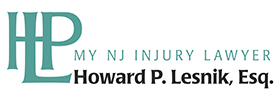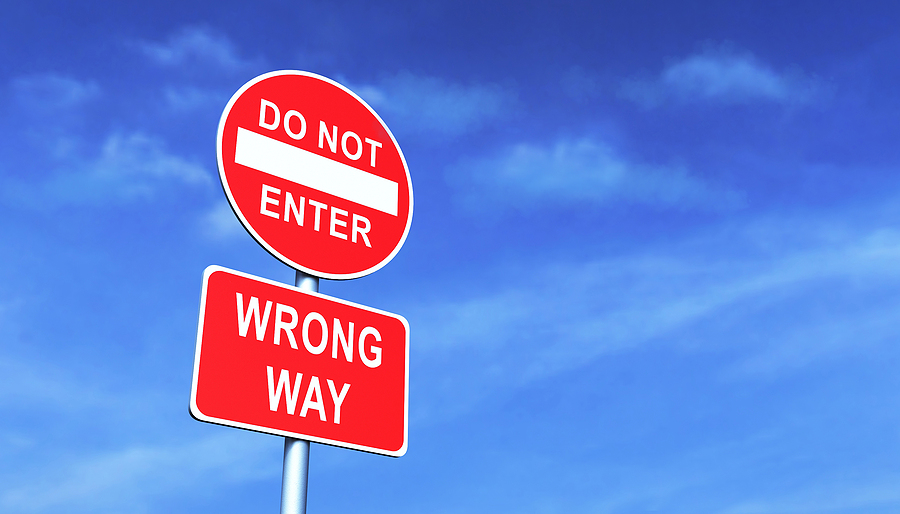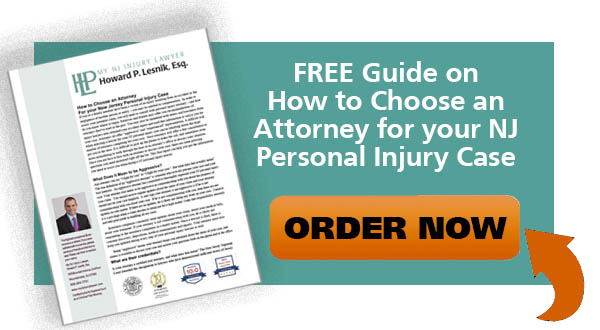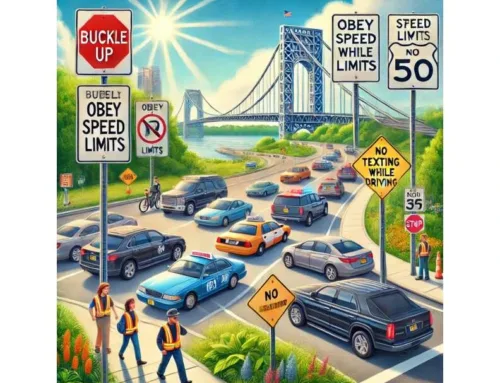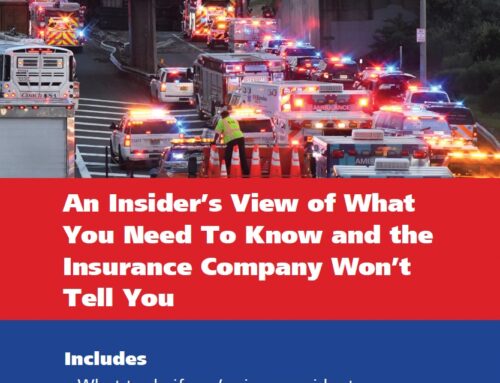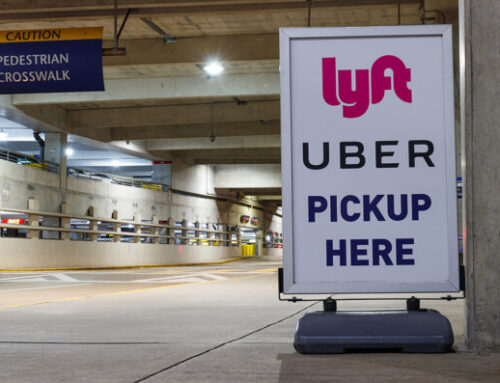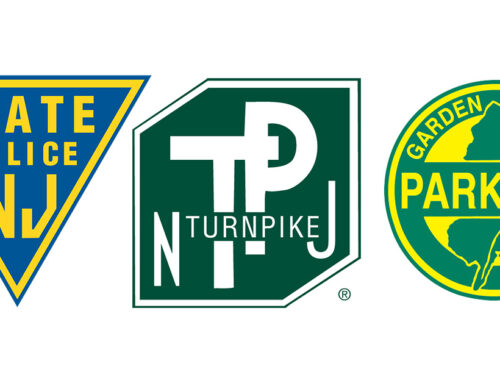Wrong-way automotive collisions are on the rise across the country, according to the AAA Foundation for Traffic Safety. New Jersey, which definitely boasts its fair share of divided highways, has not been exempt from this distressing trend.
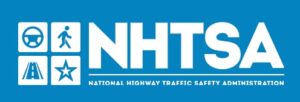 The recently released AAA Foundation study examined data from the Fatality Analysis Reporting System (FARS) spanning the years 2010 to 2018, focusing on wrong-way crashes throughout the country. The study found that the years 2010 through 2014 saw an average of 375 deaths each year in wrong-way collisions nationally. This was an increase over the yearly average of wrong-way crash deaths in years prior, as 2004-2009 saw approximately 360 fatalities annually. However, the years 2015 through 2018 witnessed 2,008 wrong-way crash fatalities, approximately 500 each year on average. That constitutes an upswing of more than 33 percent in the most recent four years of the study’s data – a one-third increase in deaths. It’s clear that the frequency of wrong-way crashes has been increasing for some time, but the rate of increase has sharpened significantly in the most recent years for which data is available, making this kind of crash a serious matter of concern.
The recently released AAA Foundation study examined data from the Fatality Analysis Reporting System (FARS) spanning the years 2010 to 2018, focusing on wrong-way crashes throughout the country. The study found that the years 2010 through 2014 saw an average of 375 deaths each year in wrong-way collisions nationally. This was an increase over the yearly average of wrong-way crash deaths in years prior, as 2004-2009 saw approximately 360 fatalities annually. However, the years 2015 through 2018 witnessed 2,008 wrong-way crash fatalities, approximately 500 each year on average. That constitutes an upswing of more than 33 percent in the most recent four years of the study’s data – a one-third increase in deaths. It’s clear that the frequency of wrong-way crashes has been increasing for some time, but the rate of increase has sharpened significantly in the most recent years for which data is available, making this kind of crash a serious matter of concern.
The state that experienced the highest rate of deaths in wrong-way collisions was Texas, with a stunning 67.7 fatalities per year. Florida had the second-highest annual average number of wrong-way crash deaths, at 34.4. At the other end of the spectrum, Washington, D.C. had no reported wrong-way collisions during the years examined in this study, while Vermont and New Hampshire each saw an average of 0.2 deaths annually. New Jersey’s statistics place it somewhere between the two extremes, with 48 wrong-way crashes during the years studied resulting in 56 deaths, or an average of 6.2 fatalities per year.
Wrong-way collisions are by no means among the most common types of automobile accident, but they tend to be among the more severe, often resulting in fatalities, because they generally involve head-on collisions between vehicles. When two cars traveling at 40 m.p.h. crash head-on, each experiences the force of an 80 m.p.h. collision. Statistical data shows that more than half of the deaths (52.8 percent) resulting from these crashes were the motorist driving the wrong way, with only 5.7 percent of deaths coming from passengers in wrong-way-traveling vehicles. The remaining 41.1 percent of fatalities came from those occupying other vehicles, either as driver or passenger.
Using data from FARS, researchers compared traits of wrong-way drivers with those of the drivers involved in the accident traveling in the correct direction, in an effort to identify factors connected in some way with being a wrong-way driver. Some of the associated factors are unsurprising; drunk drivers were found to be more likely to be wrong-way drivers, with the odds increasing as blood alcohol concentration (BAC) climbed. In fact, 60 percent of all wrong-way crashes examined within the span of the study, 2010-2018, involved a driver with a BAC of 0.08 or higher. Likewise, motorists without a driver’s license and those with suspended, expired, or revoked driver’s licenses were also more likely to be wrong-way drivers than those with a valid and current license. Elderly drivers were also found to be more likely to be the wrong-way driver in fatal crashes, with the odds increasing substantially for drivers older than age 70.
Some of the statistics were more surprising in comparison to road accidents in general, but there is room for plausible speculation about the cause of the differences with wrong-way crashes. Notably, drivers of buses and large trucks were found to be less likely to be wrong-way drivers than operators of passenger vehicles; perhaps this is attributable to a greater familiarity with regular routes, leaving less room for confusion when the bus or truck driver is about to turn onto a divided highway. The real surprise comes with the addition of passengers in the vehicle. Often the presence of passengers is considered a potential factor in distracted driving, a major cause of motor vehicle accidents. However, when looking at wrong-way crashes, the presence of passengers in the car is associated with a reduced risk of being a wrong-way driver. It’s easy to speculate that having additional people in the car provides the driver with extra sources of early warning to correct a mistake like starting to turn down the wrong side of a divided highway. This seems to coincide with statistical data regarding the small fraction of wrong-way crash fatalities made up of the passengers of wrong-way drivers.
Much of the response by policymakers to this study has rightly been focused on drunk driving prevention, as so many wrong-way drivers in fatal crashes were also intoxicated. Though overall drunk driving fatalities are trending down, there was an increase in 2015 and 2016 over previous years that may help explain the spike in wrong-way fatalities.
Contact MyNJInjuryLawyer
If you or a loved one suffered an injury in an accident in NJ, you should contact an attorney familiar with handling these claims. An experienced NJ Injury Lawyer will know how to obtain medical records, videos, photographs, experts, locate witnesses and contact the insurance company so you can make a claim for your injuries.
My NJ Injury Lawyer Howard P. Lesnik, Esq. offers complimentary strategy sessions to address any issue or questions you may have for your injury claim in NJ.
Please contact NJ Injury Lawyer Howard Lesnik, Esq., immediately if you were involved in an accident. I personally handle NJ personal injury cases on a regular basis. Please contact me now by email, by phoning 908.264.7701, or by completing the form to the right to schedule your complimentary 30-minute strategy session.
